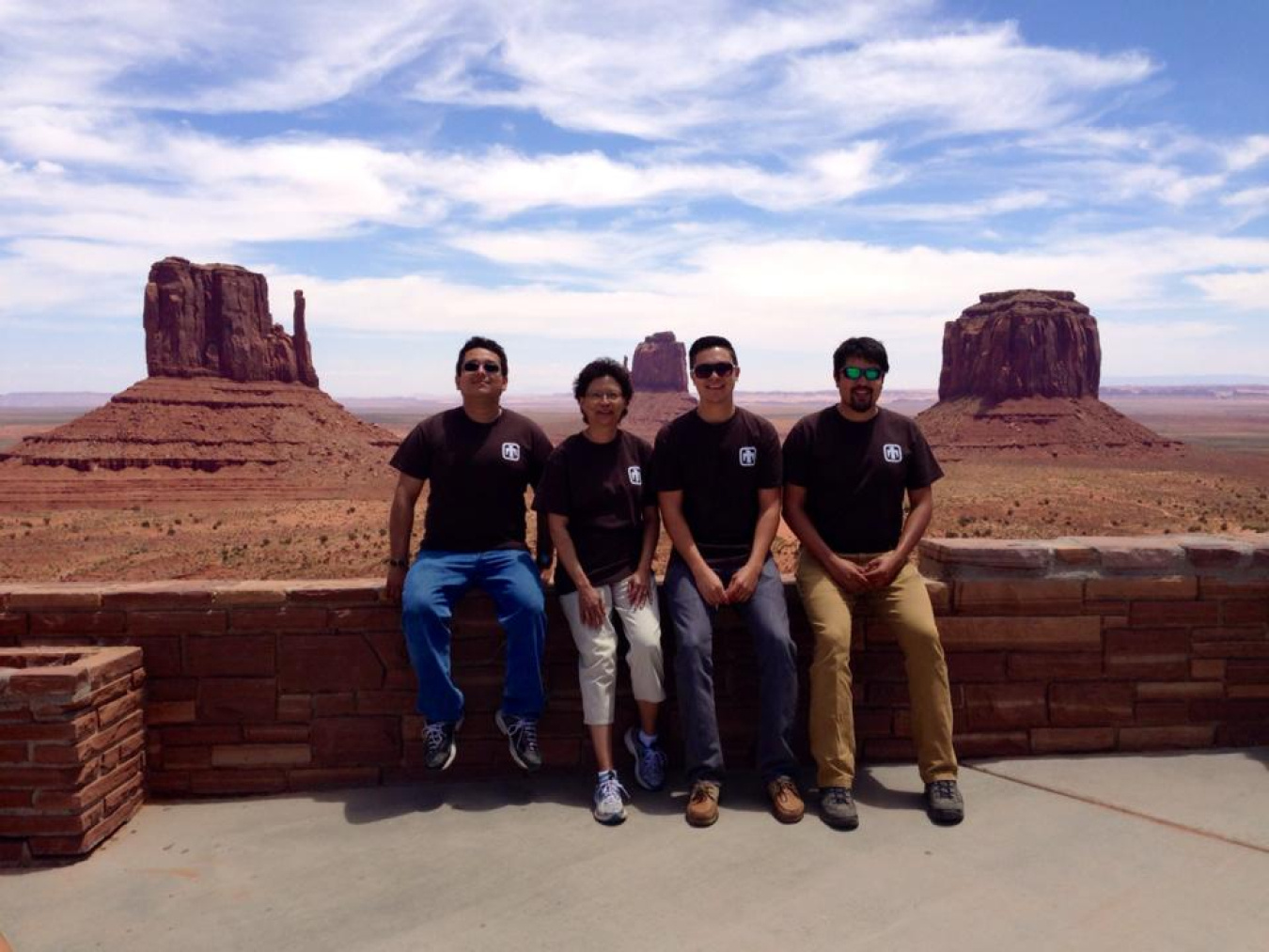My interest in energy planning on the Navajo Nation stemmed from the desire to improve energy resource development in my own community. The legacy ...
Office of Indian Energy Policy and Programs
July 22, 2014
The 2014 Sandia/Tribal Energy Program summer interns: Aaron Cate, Sandra Begay-Campbell, Thomas Jones, and Len Necefer. Photo from Sandra Begay-Campbell, Sandia National Laboratories
My interest in energy planning on the Navajo Nation stemmed from the desire to improve energy resource development in my own community. The legacy of environmental and health impacts from uranium and coal mining motivated me to find ways of developing energy resources in a manner more consistent with cultural values and the visions of the Navajo Nation.
My dissertation research at Carnegie Mellon focuses on the development of an analytical modeling framework for energy policy, informed by cultural values, for the Navajo Nation. The question I aim to answer is: How can analytical modeling of energy systems be adapted to the unique cultural context of American Indian nations, and how can such tools be used to engage community members in decision making surrounding energy policy?
In working toward this goal, I conducted a series of interviews on the Navajo Nation with citizens and policymakers on their views about energy development. These interviews provided insight into which energy development outcomes are of most concern to stakeholders and which cultural values are most significant to energy resource management. Outcomes most relevant to stakeholders will be tracked or assessed within the modeling framework (e.g., land transformations and their impacts on grazing and medicinal herb collection).
The analytical model I’m developing for the Navajo Nation uses the Tools for Energy Model Optimization and Analysis (TEMOA), an open-source energy system model based on the International Energy Agency’s MARKAL framework. My hope is that such analytical frameworks will be adapted to each Tribe’s needs and used to help guide tribal policymakers.
The DOE Tribal Energy Program Summer Internship Program at Sandia National Laboratories has provided me with valuable guidance, connections, and knowledge that have enhanced my dissertation. While I have developed many valuable technical analysis skills and tools in my Ph.D. program, most of the knowledge about Indian energy issues requires significant on-the-ground engagement with communities and their leaders. As a Tribal Energy Program intern, I have developed important connections in the area of tribal energy working with tribal leaders and my fellow interns.
The measurement of success is different between the academic and Navajo communities. In my academic role, research and publication are requisite measures of success toward the completion of the Ph.D. degree. In my home community, on the other hand, research and publication are secondary to how much we as tribal members directly contribute to the betterment of the Navajo Nation with our education.
My time at Sandia has allowed me to balance both of these responsibilities by working directly with research that will improve energy planning for American Indian nations. I believe that because of this internship, my dissertation and future work will have a more meaningful and beneficial impact on all tribal communities and governments on complex issues of energy resource management.
About the Tribal Energy Program Summer Internship Program
Since 2002, the DOE Tribal Energy Program Summer Internship Program at Sandia National Laboratories has provided more than 30 Native American college students with hands-on work experience in the energy industry. All of the students selected to participate in the program must have a strong, articulated interest in Indian renewable energy; must have achieved an undergraduate GPA of 3.2 or higher or a Master’s degree GPA of 3.5 or higher; and must be pursuing an upperclassman or graduate school technical major.
More by this author
-
 Energy Analyst and Project Monitor to the Office of Indian Energy Policy and Programs (Contractor)
Energy Analyst and Project Monitor to the Office of Indian Energy Policy and Programs (Contractor)

